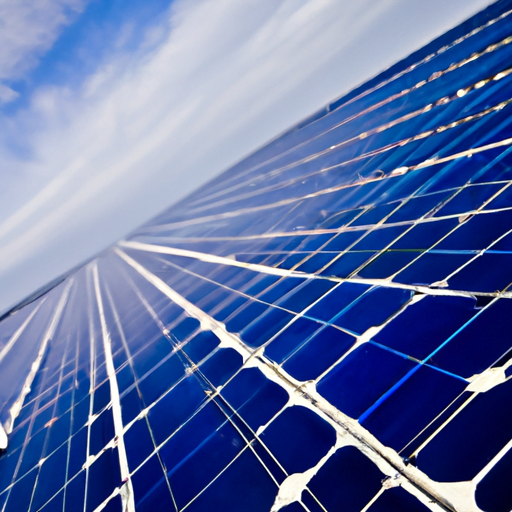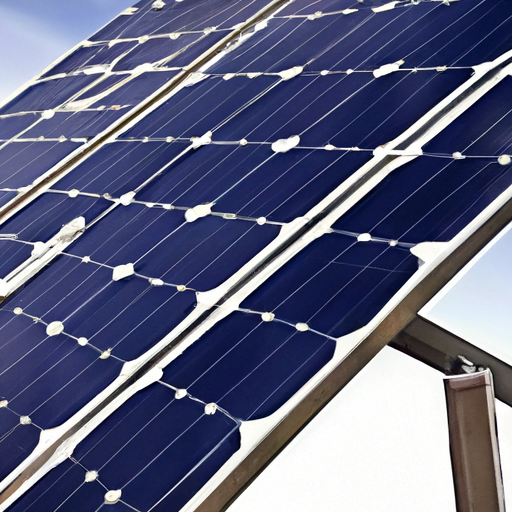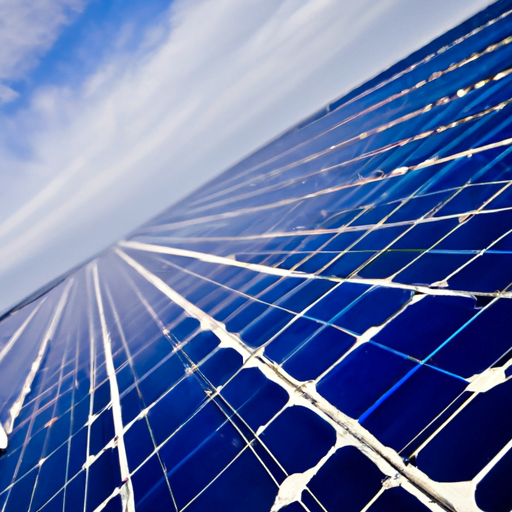So, you’ve found yourself in a remote location, away from the hustle and bustle of the city. It’s peaceful and serene, but now you’re faced with the challenge of getting power to your off-grid home. How do you go about it? Well, let’s dive into the world of off-grid living solutions and explore the various options available to you.
When it comes to powering remote locations, there are a few key considerations to keep in mind. First and foremost, you need to decide on the source of your power. Solar panels, wind turbines, and hydroelectric systems are all popular choices for off-grid living. Each comes with its own set of pros and cons, which we’ll delve into further in the article.
Once you’ve chosen your power source, you’ll need to think about storage. Batteries are essential for storing excess energy generated by your system, allowing you to power your home during cloudy days or periods of low wind or water flow. There are different types of batteries available, and we’ll guide you through the options to help you make an informed decision.
In addition to power generation and storage, you’ll also need to consider energy efficiency. From LED lighting and energy-efficient appliances to smart power management systems, there are plenty of ways to reduce your energy consumption and make the most of your power supply. We’ll explore these strategies and more, equipping you with the knowledge you need to thrive in your off-grid lifestyle.
So, if you’re ready to learn about off-grid living solutions and discover how to power your remote location, dive into our article. You’ll find all the information you need to make informed decisions and create a self-sustaining and eco-friendly home in even the most remote of locations. Living in a remote location can be a dream come true for many people. The peace and tranquility that comes with being away from the hustle and bustle of city life is unparalleled. However, one of the biggest challenges of living off-grid is finding a reliable source of power. In this article, we will explore the various off-grid living solutions that can help power remote locations.

Understanding Off-Grid Living
What is off-grid living?
Off-grid living refers to living in a location that is not connected to the main power grid. This means that you are responsible for generating your own electricity and meeting your power needs without relying on traditional power sources. Off-grid living can be found in various settings, including rural areas, cabins in the wilderness, and even tiny homes on wheels.
Advantages and challenges of off-grid living
There are several advantages to living off-grid. For starters, it allows you to become self-sufficient and reduces your reliance on external power sources. This independence can give you a sense of freedom and control over your energy consumption. Additionally, off-grid living often results in a smaller carbon footprint, as renewable energy sources are commonly used.
However, there are also challenges associated with off-grid living. Generating and maintaining your own power requires careful planning, investment, and regular maintenance. Without a connection to the main power grid, power outages can be more common, especially during inclement weather conditions. Therefore, it is important to have backup systems in place to ensure a continuous power supply.
Assessing Power Needs in Remote Locations
Determining power requirements
Before you can decide on the best power solution for your remote location, it is essential to assess your power needs. Start by making a list of all the appliances and devices you will be using and their power requirements. This will help you determine the amount of electricity you need to generate on a daily basis.
Factors to consider when assessing power needs
There are several factors to consider when assessing power needs in remote locations. The climate and weather conditions play a significant role in the availability of certain renewable energy sources, such as solar and wind power. Additionally, the size of your living space, the number of people residing there, and the lifestyle you lead will impact your energy consumption.
Solar Power Solutions
How does solar power work?
Solar power is one of the most popular off-grid living solutions. It harnesses the energy from the sun and converts it into usable electricity. Solar panels, made up of photovoltaic cells, absorb sunlight and generate direct current (DC) electricity. This electricity is then converted into alternating current (AC) electricity through an inverter, which can be used to power appliances and devices.
Types of solar power systems
There are two main types of solar power systems: stand-alone systems and grid-tied systems. Stand-alone solar systems are designed to function independently and store excess energy in batteries for later use. Grid-tied systems, on the other hand, are connected to the main power grid and allow for the selling or buying of electricity when needed.
Choosing the right solar power system for remote locations
When choosing a solar power system for your remote location, it is important to consider your power requirements and the available sunlight in your area. Stand-alone systems with battery storage are typically more suitable for off-grid living, as they provide a reliable power source even during cloudy days or at night.

Wind Power Solutions
Understanding wind power generation
Wind power is another renewable energy source that can be harnessed for off-grid living. Wind turbines convert the kinetic energy from the wind into mechanical power, which is then transformed into electricity through a generator. The energy generated by wind power depends on the speed and consistency of the wind in your location.
Types of wind turbines
There are two main types of wind turbines: horizontal-axis turbines and vertical-axis turbines. Horizontal-axis turbines are the most common and consist of a rotor with blades that rotate around a horizontal axis. Vertical-axis turbines, on the other hand, have a rotor that rotates around a vertical axis. Both types have their advantages and disadvantages, so it’s important to research and choose the one that best suits your location and power needs.
Benefits and limitations of wind power in remote locations
One of the key benefits of wind power is its ability to generate electricity even during the night or on cloudy days when solar power may be limited. Wind power is also a clean and renewable energy source, which can help reduce your carbon footprint. However, wind power does have its limitations. It requires a consistent and strong wind resource, and the noise and visual impact of wind turbines may not be suitable for all remote locations.
Water Power Solutions
Harnessing hydroelectric power
Hydroelectric power, generated from the energy of flowing or falling water, can be a viable off-grid living solution in certain remote locations. It involves the use of a turbine and a generator to convert the energy of moving water into electricity. This method is often used near rivers, streams, or other bodies of water with a consistent flow.
Micro-hydro systems for remote locations
Micro-hydro systems are small-scale hydroelectric power systems that can be used in remote locations. They require a steady and reliable water source and can generate electricity 24/7. Micro-hydro systems can be a cost-effective and sustainable solution for off-grid living, but they do require careful planning and design to ensure optimal performance.
Considerations for implementing water power solutions
When considering water power solutions for your remote location, it is important to assess the availability and reliability of the water source. The flow rate and head height of the water will determine the potential power output. Additionally, you should also take into account any environmental or regulatory considerations associated with harnessing water power in your area.
Hybrid Power Solutions
Combining renewable energy sources
Hybrid power solutions involve combining multiple renewable energy sources to meet your power needs. This can be a combination of solar, wind, hydroelectric, or even biomass energy. By diversifying your power sources, you can ensure a more stable and reliable power supply.
Advantages of hybrid power systems
Hybrid power systems offer several advantages for off-grid living. By utilizing different energy sources, you can maximize your power generation potential and reduce your reliance on any single source. This can help overcome the limitations of individual renewable energy sources and ensure a continuous power supply. Additionally, by combining various energy sources, you can also optimize your system’s efficiency and minimize energy waste.
Examples of successful hybrid power solutions
There are many successful examples of hybrid power solutions in remote locations around the world. Some communities have implemented hybrid systems that combine solar, wind, and hydroelectric power to ensure a reliable and sustainable power supply. These systems often involve careful planning, monitoring, and maintenance to ensure optimal performance.
Backup Solutions for Reliable Power
Importance of backup power systems
Having backup power systems is crucial for off-grid living, as it provides a reliable power source during unforeseen circumstances or power outages. Backup systems can help bridge the gap during times when renewable energy sources may not be able to meet your power needs.
Options for backup power in off-grid living
There are several options for backup power in off-grid living. One common option is to have a backup generator fueled by diesel, propane, or gasoline. These generators can be manually or automatically activated when needed. Another option is to have a backup battery storage system, which can store excess energy generated by renewable sources and provide power during low output periods.
Maintaining backup systems for uninterrupted power
Regular maintenance and monitoring of backup systems are essential to ensure uninterrupted power supply. This includes routine inspections, fuel storage and replacement, and battery maintenance. It is also important to periodically test backup systems to ensure they are in proper working condition and ready to be activated when needed.
Energy Storage Options
Types of energy storage systems
Energy storage is a critical component of off-grid living, as it allows you to store excess energy for later use. There are various types of energy storage systems available, including batteries, pumped hydro storage, compressed air energy storage, and flywheel energy storage.
Battery technologies for off-grid power
Batteries are the most commonly used energy storage solution for off-grid power systems. There are different types of batteries available, including lead-acid batteries, lithium-ion batteries, and flow batteries. Each type has its own advantages and disadvantages in terms of cost, energy density, lifespan, and environmental impact.
Sizing and maintaining energy storage
Sizing your energy storage system is crucial to ensure you have enough capacity to meet your power needs during periods of low energy generation. This involves calculating the amount of energy you need to store based on your daily power consumption and the expected duration of low output periods. Regular maintenance of your energy storage system is also important to ensure its longevity and optimal performance.
Energy Efficiency Techniques
Tips for maximizing energy efficiency
Maximizing energy efficiency is essential for off-grid living, as it allows you to make the most of your available power resources. Some energy efficiency tips include using energy-efficient appliances, insulating your living space, using LED lighting, and minimizing energy wastage.
Appliance selection and usage in remote locations
When selecting appliances for your remote location, it is important to choose energy-efficient models that are suitable for off-grid living. Look for appliances with high energy efficiency ratings and low power consumption. Additionally, adopting energy-saving habits such as turning off lights and appliances when not in use can also help reduce your energy consumption.
Designing a sustainable off-grid living space
Designing a sustainable off-grid living space involves incorporating energy-efficient features into your home or living structure. This can include passive solar design, using natural insulation materials, and optimizing the orientation and placement of windows and doors to maximize natural lighting and ventilation.
Conclusion
Embracing off-grid living can provide a unique and rewarding way of life. By understanding the various off-grid living solutions and selecting the right power system for your remote location, you can achieve energy independence and reduce your carbon footprint. Whether you choose solar, wind, water, hybrid, or a combination of renewable energy sources, careful planning, regular maintenance, and energy-efficient practices are key to a successful off-grid power system. So, go ahead and power your remote location with confidence, knowing that you have the knowledge and tools to create a sustainable and reliable power solution.




